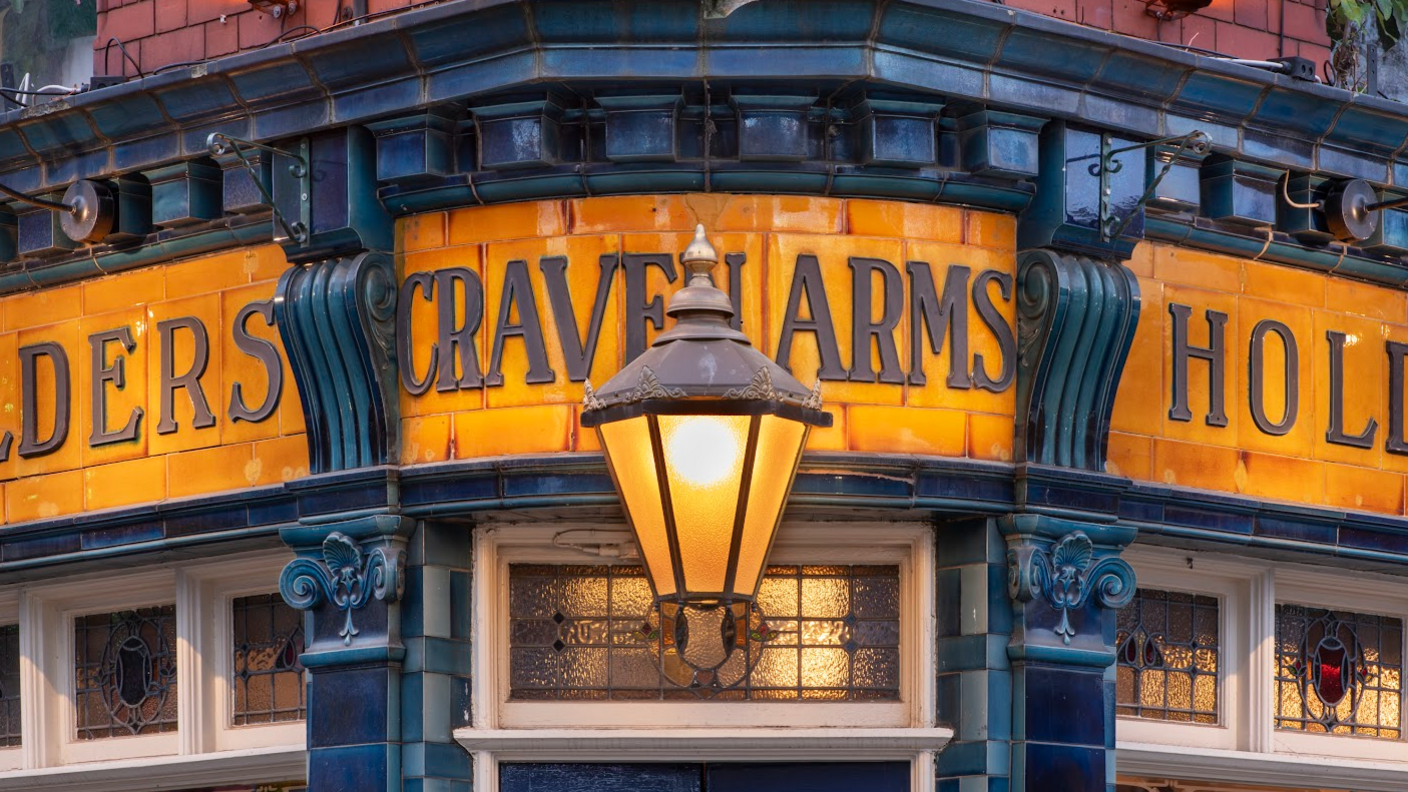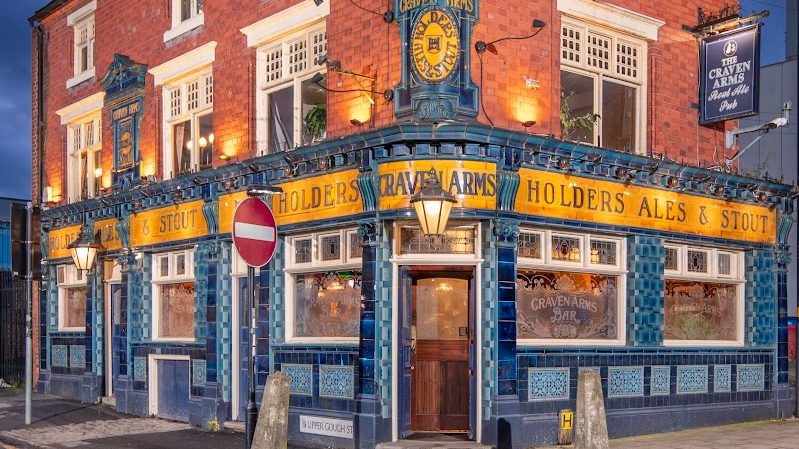Listed status for tiled pub with link to the past

The pub was designed between 1906 and 1910
- Published
A city centre pub with a "breathtaking" exterior adorned in glazed ceramic tiles - some bearing the name of a long-gone British beer - has been granted listed status.
The Craven Arms, on the corner of Upper Gough Street and Blucher Street in Birmingham, was designed between 1906 and 1910, although a pub had stood in that location since at least the 1840s, Historic England said.
Pubs were established in the city back then within industrial areas, along with new factories and workers’ houses, the organisation explained.
The Campaign for Real Ale (CAMRA) said the decision - which protects the site from certain redevelopments - was "terrific news".

The pub's striking tiles make it a well-known landmark in the city centre
Grade II listed status was afforded by the Department for Culture, Media and Sport, and means special building consent must be secured before changes can be made that might affect the venue's special character.
According to CAMRA, the distinctive pub has been given the safeguards it deserves.
Shelly Bentley, regional director, said: "The historic pub will now receive greater legal protection, hopefully safeguarding the community hub from unnecessary change or damage – preserving this beautiful, historic asset for generations to come."
The pub's crowning glory is a sea of blue and yellow tiles. The glazed decorations, some of which are molded, adorn the ground floor, while the upper floors are of red brick and feature timber-framed windows.
The moldings remain as rare advertisements for Holder's Ale, external. Holder's Brewery was based in the Aston area of the city and was purchased by M&B in 1919, the city council said.

Listed building consent must be secured before making any changes to the building that might affect its special character
According to Historic England, local architect Arthur Edwards is attributed with designing the pub and is also thought to have been responsible for the site presently occupied by chain pub O’Neill’s on nearby Broad Street.
While most of the workers’ houses surrounding the Craven Arms had been demolished by the 1970s, the pub itself remains as a traditional real ale venue, appreciated and promoted by ale aficionados.
Nostalgia appears to loom large in its recent history. In 2007, not long after the England smoking ban was introduced in July that year, a landlady sprayed the smell of cigarettes around the bar after regulars said they missed the traditional smoky atmosphere.
Louise Brennan, Historic England regional director for the Midlands, said: “It’s wonderful that the Craven Arms has been recognised on our advice.
"Its distinctive exterior is breathtaking and I know that many people will be pleased to hear that another of Birmingham’s historic pubs now has a level of protection.”
Follow BBC West Midlands on Facebook, external, X, external and Instagram, external. Send your story ideas to: newsonline.westmidlands@bbc.co.uk, external
Related topics
- Published6 October 2011